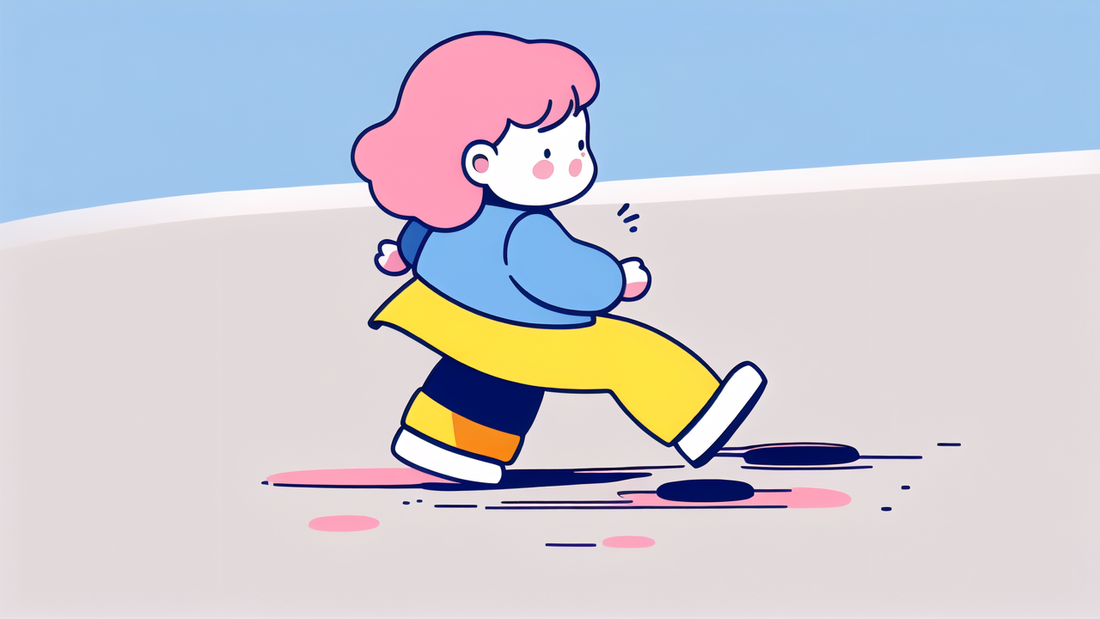
Top 5 Non-Slip Baby Shoes to Keep Your Little One Safe and Stylish
The Importance of Non-Slip Baby Shoes
Understanding the Need for Non-Slip Features
Non-slip baby shoes are crucial for your little one's safety. As babies start to explore, they need shoes that provide stability. These shoes help prevent slips and falls on various surfaces. They give babies confidence to move around freely. Non-slip features are especially important on smooth floors like tiles or hardwood. They also help on outdoor surfaces such as grass or concrete. Good grip allows babies to develop their balance and coordination. It's a key factor in their early walking stages. Non-slip shoes can make a big difference in your baby's mobility and safety.

The Role of Grip in Baby's First Steps
Grip plays a vital role in a baby's first steps. It gives them the traction they need to stand and walk. Good grip helps babies feel more secure when moving. This confidence encourages them to practice walking more often. The right amount of grip can also help with proper foot development. It allows babies to use their toes and feet naturally. This is important for building strength in their legs and feet. Grip also helps babies learn how to adjust their balance. It's a key part of their motor skill development. With the right grip, babies can focus on walking instead of worrying about slipping.
Best Non-Slip Baby Shoes on the Market
Reviewing the Top Non-Slip Baby Shoes
- Stride Rite Soft Motion Sneakers
- Flexible sole with deep grooves for grip
- Memory foam insole for comfort
- Available in various sizes and colors
- Momo Baby Leather Shoes
- Genuine leather with rubber sole
- Approved by the American Podiatric Medical Association
- Cute designs with good ankle support
- Robeez Soft Soles
- Soft leather upper with suede sole
- Elastic ankle band for easy on/off
- Barefoot design for natural foot movement
- See Kai Run Smaller Sneakers
- Flexible rubber sole with good traction
- Wide toe box for natural toe spread
- Breathable canvas upper
- Nike Flex Contact Baby Shoes
- Lightweight with flexible grooves
- Foam midsole for cushioning
- Mesh upper for breathability
These shoes offer a mix of safety, comfort, and style. They cater to different needs and preferences.

What to Consider When Buying Non-Slip Baby Shoes
When buying non-slip baby shoes, consider these factors:
- Sole Material: Look for rubber or textured soles for better grip.
- Flexibility: Shoes should bend easily to allow natural foot movement.
- Fit: Ensure there's enough room for growth but not too loose.
- Breathability: Choose materials that allow air flow to keep feet cool.
- Ease of Use: Consider how easy it is to put on and take off the shoes.
- Durability: Check reviews to see how well the shoes hold up over time.
- Safety Certifications: Look for shoes approved by podiatrists or safety organizations.
Remember, the best shoe depends on your baby's specific needs and activities.
How to Choose the Right Non-Slip Baby Shoes for Your Child
Assessing Your Child's Needs
Every child is unique, so their shoe needs may vary. Consider your baby's age and stage of development. Are they just starting to cruise or already walking? Think about where they'll wear the shoes most. Indoor shoes may need different features than outdoor ones. Look at your child's foot shape. Some babies have wide feet, others narrow. Check if your child has any special foot conditions. These might require specific shoe features. Consider your lifestyle too. Do you need shoes that are easy to clean? Think about the climate where you live. This can affect the type of material you choose.

The Impact of Material and Design on Safety and Comfort
The material and design of baby shoes greatly affect safety and comfort. Leather is durable and molds to the foot shape. Canvas is lightweight and breathable. Synthetic materials can be water-resistant but less breathable. The sole material is crucial for grip. Rubber soles often provide the best traction. The shoe's design should allow natural foot movement. A flexible sole helps with this. The toe box should be wide enough for toes to spread. This aids in balance and foot development. Ankle support can be helpful for new walkers. But it shouldn't restrict movement too much. Look for shoes with soft, padded collars to prevent blisters.
Comparing Prices and Brands: Finding Value for Money
When comparing prices and brands, consider long-term value. Cheaper shoes might wear out quickly, needing frequent replacement. Higher-priced shoes often last longer and provide better support. Look for sales or discounts on quality brands. Some brands offer grow-with-me features, providing longer use. Read customer reviews to gauge durability and performance. Compare warranties and return policies. Some brands offer guarantees on their non-slip features. Consider buying from stores with good customer service. They can help with fitting and exchanges if needed. Remember, the most expensive shoe isn't always the best. Focus on finding the right balance of quality, features, and price for your needs.
